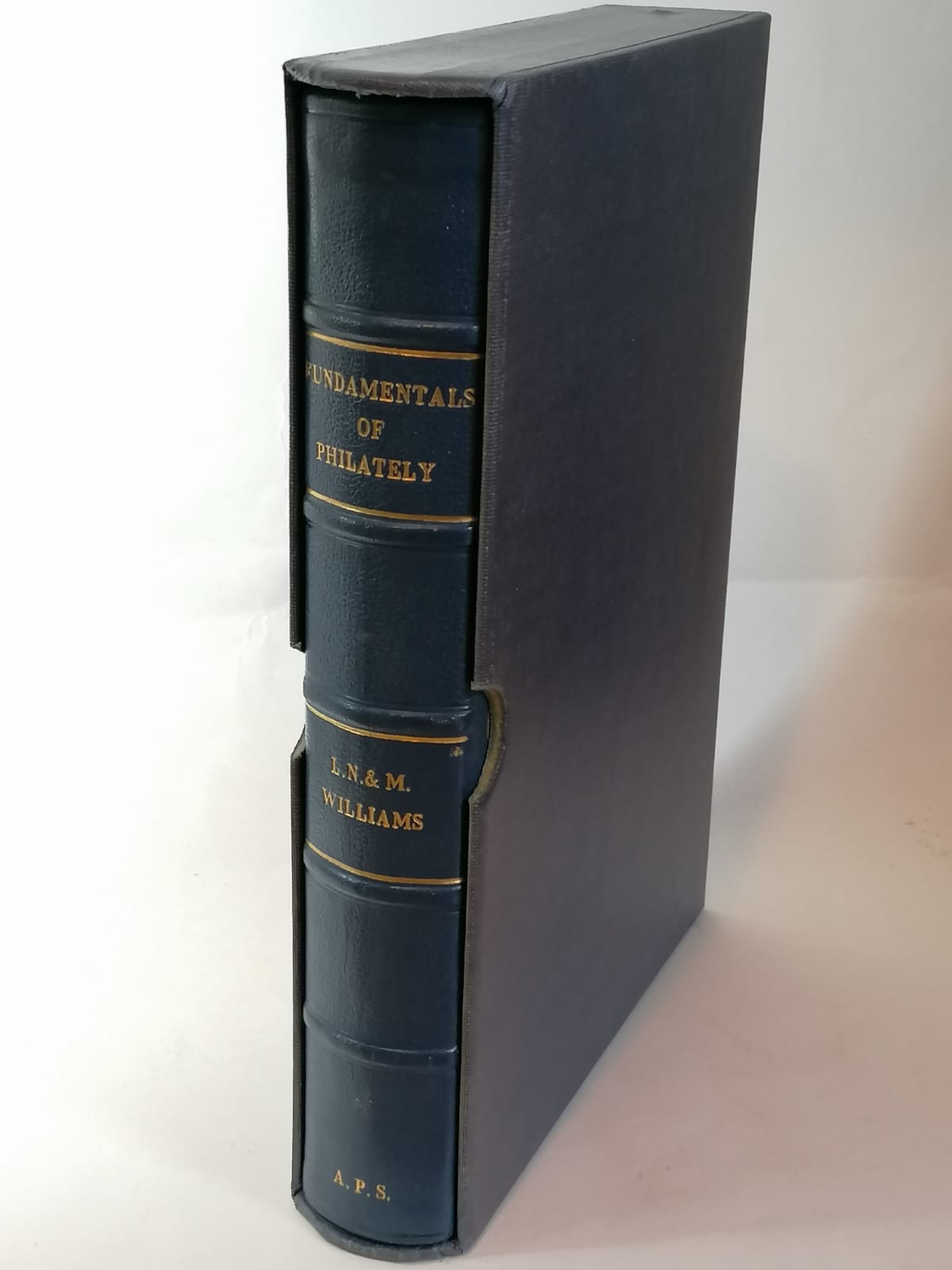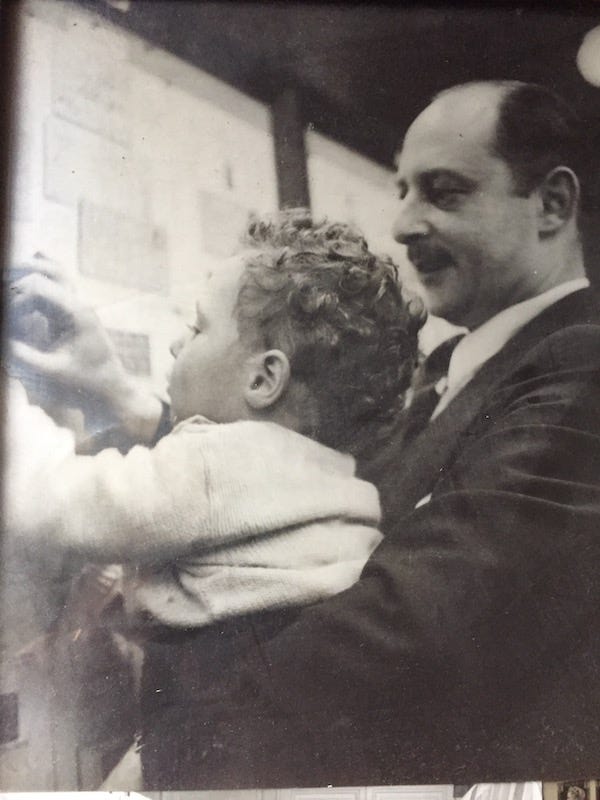Authors’ Binding of 'Fundamentals of Philately'
A private binding of the iconic book revealed
This article was first published as “Author’s Binding of Fundamentals of Philately.” Philatelic Literature Review 69 no. 4 (Fourth Quarter 2020). However, this post has some material not in the article.
In June 2020, as the world grappled with Covid-19 and the never-ending lockdowns, Casper Pottle of HH Sales informed me that he had been introduced to Marcus Williams by David R. Beech; Marcus having contacted David to donate some of his father’s papers to the British Library.
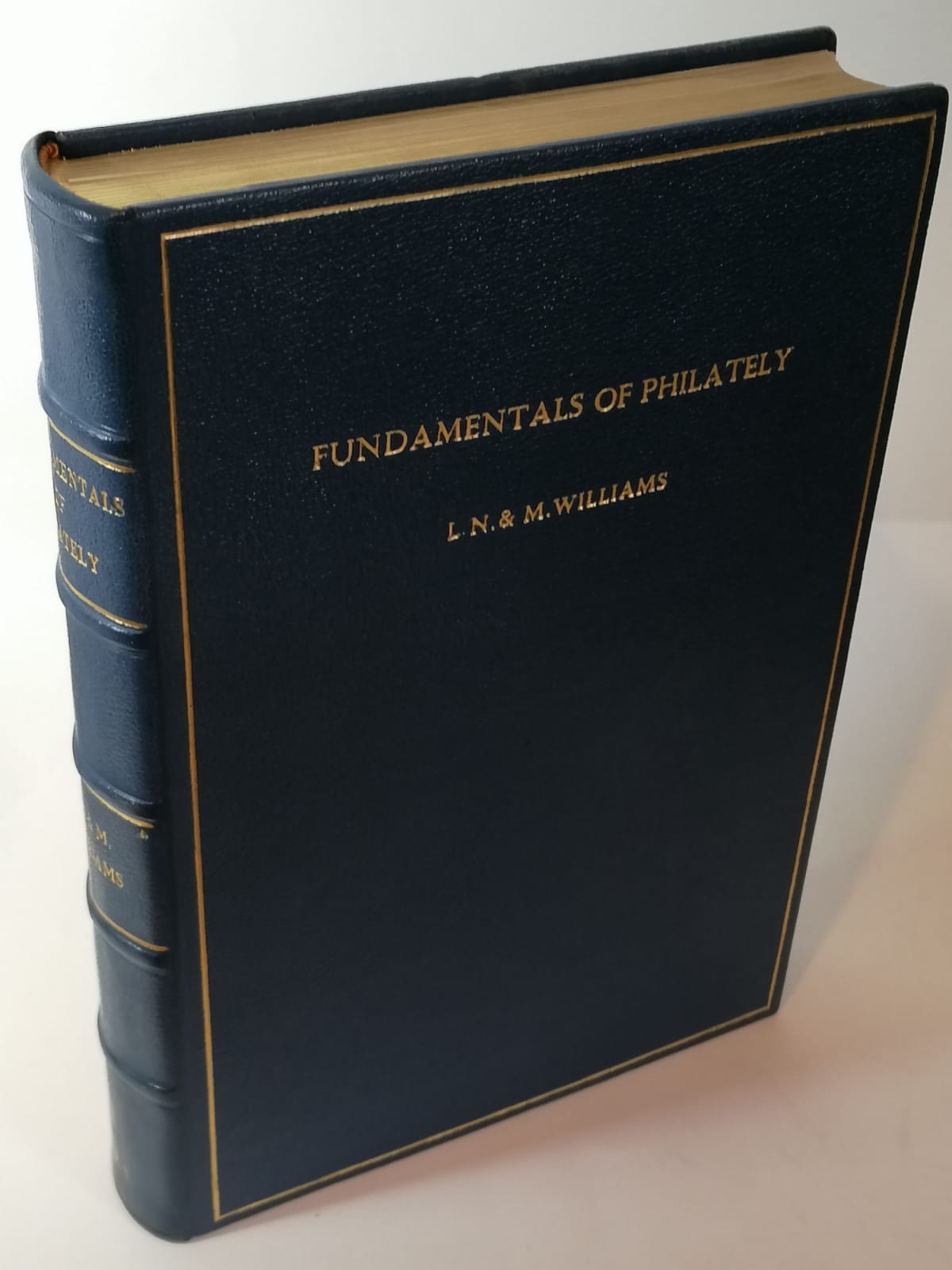
Marcus is the son and nephew respectively of the philatelic legends, Leon Norman Williams and Maurice Williams. Apparently, Marcus also had duplicate copies of some of the works of the Williams brothers that were looking for a new home! Further, Casper suggested, rather tantalizingly, that one of the books was a special edition of Fundamentals of Philately (Figures 1 and 2). Having written on the first edition of the book in 2019,1 my ears perked up and I was, well, all ears!
Briefly on Fundamentals
Fundamentals of Philately was serialized in The American Philatelist between April 1954 and June 1963. Further, as the work progressed, five soft bound sections were published between 1958 and 1968. Finally, the work was published as a consolidated hard bound book in 1971. A revised edition followed in 1990.
There were four printings of the first edition. All are hard bound in either reddish-brown (the first three) or light-grey (the fourth) cloth and were issued without dust jackets.
Authors’ Binding of Fundamentals
The “Authors’ Binding” of the first edition of Fundamentals is not an official binding; rather it was privately arranged by the Williams brothers as they did for many of their works. The presence of the individual sections’ title pages and preface indicates that its form is the same as that of the First Printing. The work was bound by Coleman of London whose name is inscribed in small gold stamped letters on the bottom of the inside front cover. The binding is in full deep blue leather and a matching cloth covered slipcase accompanies. Maurice has noted in one of the copies, now held by the family, that only three of these were made (Figure 3). No doubt, the brothers were not just great writers but also true connoisseurs of philatelic literature!

A bibliography of this author’s binding is given below. A short interview with Marcus Williams follows which will be of much interest and sets the historical context.
Williams, L[eon]. N[orman]., and M[aurice]. Williams. Fundamentals of Philately. 1st ed. State College, Pennsylvania: The American Philatelic Society, 1971
(2) p + (4) pp + 629 pp + (1) p + xxx + (4) p; individual section leaves of (2) pp each before pages 1, 111, 231, 343, and 453. 262 mm (outer covers) and 255 mm (inner pages). Hard Bound by Coleman, London in Full Deep Blue Leather with raised bands and gold stamping on front cover and spine. No DJ. Matching Blue Cloth Slipcase. Special Author’s Binding of the First Edition First Printing of which only three were made.
Appendix - Interview with Marcus Williams
Marcus (Figure 4), please tell me about yourself.
I was born in 1950. Though not a serious philatelist in the mode of my father and uncle, as a boy I collected stamps depicting trains and subsequently have specialised in cricket stamps, helping my wife Wendy to run Willow Stamps2 which caters to cricket collectors. My father enrolled me within a few hours of birth as a member of the Junior (now National) Philatelic Society and there is a photo of me with him at the 1951 London international stamp exhibition (Figure 5).
Stamps played a huge part in the lives of Norman and his brother Maurice; as writers and collectors they were well known throughout the philatelic world. Maurice was a full-time philatelic writer, while Norman combined his writing with his career in the law. Their library, which was kept at Maurice’s house, was huge. Around 1960 they used to appear on a monthly children’s television programme (Figure 6) and I remember visits to the studio. There were rehearsals during the afternoon before it went out live at 5 PM. Although Maurice was eight-and-half years older, the brothers had a very close relationship and Norman felt Maurice’s death in 1976 very keenly.
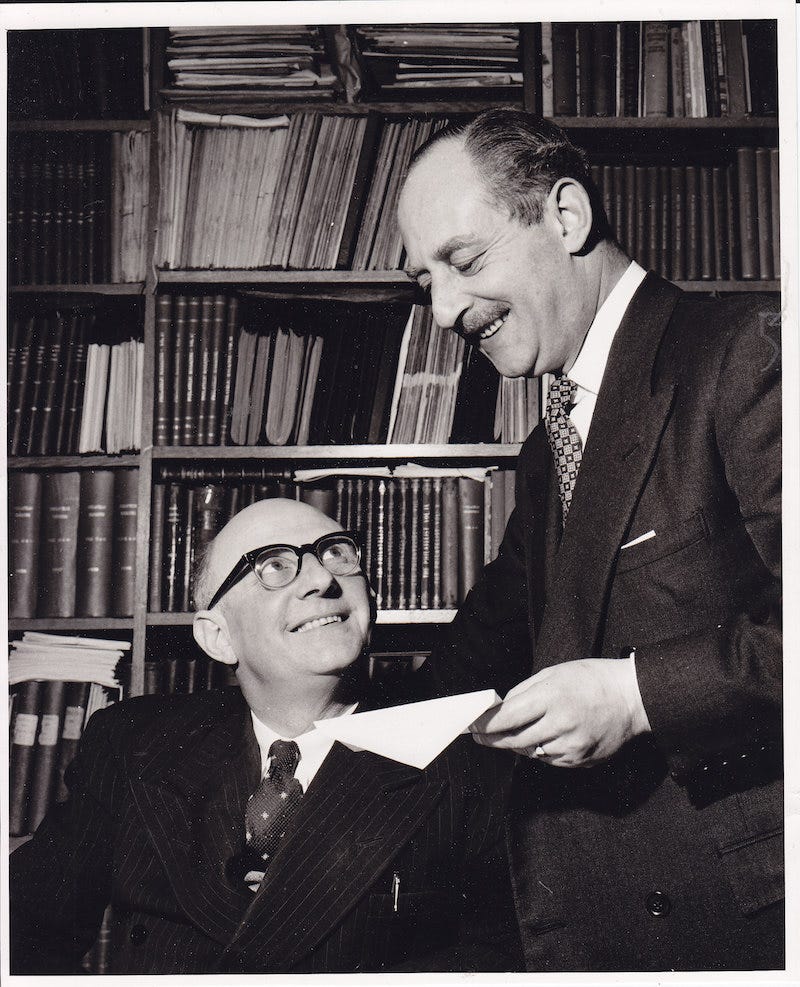
In 2020, you donated some of the research papers of L. N. and M. Williams to the British Library. Since much of them were already donated in the past decades by your father and later your mother Denise, what was the nature of this latest donation?
The latest donation3 following my mother’s death, consisted of a unique archive of every article they had published, covering seven decades (1935-1999). There were also files of my father’s philatelic correspondence and other related material such as contracts relating to the many books (more than 30) that they wrote.
Your father and uncle had a huge joint library which was the basis of their researches into various subjects. What became of that library?
It was a joint library (Figure 7). After Maurice died the bulk of it was sold to a collector overseas although Norman retained some items for reference including all the books they had jointly written.4
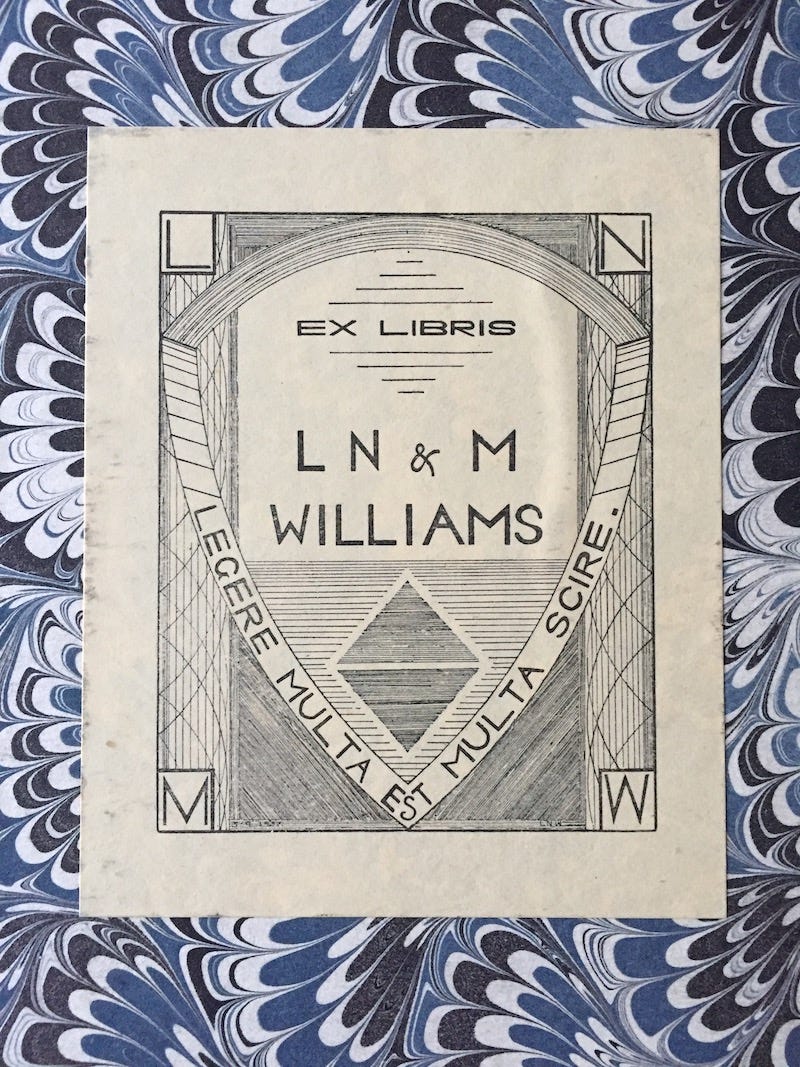
I know that your father’s library was sold in 2000 by Grosvenor Auctions. What was retained by the family?
The family retains a set of the books written by the Williams brothers. Some duplicate items were bought by HH Sales.
Could you tell us more about the author’s edition of the 1971 First Edition First Printing of Fundamentals of Philately?
This is a blue, leatherbound, cased version (the leather still smells wonderful!). A handwritten note by Maurice on the fly leaf of the family’s copy states: “Of this special authors’ binding only 3 were made.” This would have been done privately by the brothers, using a specialist London bookbinder; the brothers rebound several of their earlier books for their own library and I am almost certain this would have been the case with the book in question. My guess is that the third copy may have been part of the main library sale, but I do not know.5 In 1990, The American Philatelic Society produced three specially bound Author’s Copies of the revised edition of Fundamentals.
Published as Bhuwalka, Abhishek. “An Inquiry into the First Edition of Fundamentals of Philately.” Philatelic Literature Review Vol. 68 No. 3 Whole No. 264 (Third Quarter 2019): 180-187.
Inquiries may be directed to willowstamps@gmail.com.
There were two earlier donations of the Williams Papers to the British Library, one in 1990 and another in 2002. See Beech, David R. “An Index: Why these are Essential in Printed Books. Lessons Learnt from L. N. and M. Williams.” The London Philatelist Vol. 129 Whole No. 1478 (September 2020): 321-322. The first donation is recorded in [Welch, Bill]. “Library Receives Williams’ Philatelic Research Papers.” Philatelic Literature Review Vol. 39 No. 2 (Second Quarter 1990): 118 and consisted of two volumes of research correspondence and other papers relating to Famous Stamps (1940) and More Famous Stamps (1942).
According to Birch, the Williams library was bought by Joseph Hackmey, then of Israel, in 1976. See Birch, Brian. Philatelic and Postal Bookplates. Montignac Toupinerie, France: The Author, 2018. Available on http://www.globalphilateliclibrary.org/birch/PhilatelicPostalBookplates.pdf (accessed 28 October 2020). Norman’s working library was sold by Grosvenor Auctions on 9 February 2000. Part of Hackmey’s library was sold by Huys-Berlingin AG on 18-19 October 2003.
The second copy is now in the author’s philatelic library.



